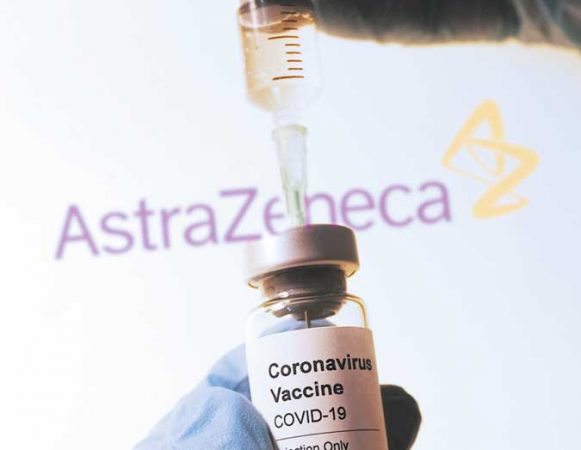AstraZeneca use for people below 60 stopped

By Kyle Aristophere T. Atienza and Vann Marlo M. Villegas, Reporters
THE PHILIPPINES has suspended the use of AstraZeneca, Plc’s coronavirus vaccines for people below 60 years after European regulators found possible links between the shot and rare cases of blood clots.
“We are aware of the recommendation of the European Medicines Agency (EMA) to list blood clots as very rare side effects of the AstraZeneca vaccine,” the Department of Health (DOH) said in a statement on Thursday.
The agency adopted the recommendation of the local Food and Drug Administration (FDA), which said 16 out of about 200 million people vaccinated with the AstraZeneca drug had reduced platelet counts.
The findings mostly applied to females aged 60 years old and below, FDA Director-General Enrique D. Domingo said. Filipinos who got the vaccine have yet to report the side effect, he added.
Vaccine czar Carlito G. Galvez, Jr. earlier said the country would take delivery of almost a million more doses of AstraZeneca vaccines this month. But the shipment was postponed due to global supply problems.
Manila was using diplomatic channels to get the doses as soon as possible, he added.
The delay gives the country more time to scrutinize the vaccine’s side effects, Mr. Domingo said.
“The next batch of AstraZeneca vaccines is expected to be delivered a month from now,” he said. “That will give us the time to study the evidence and come up with new guidelines.”
The Philippines initially received 525,600 doses of the AstraZeneca vaccine, which it had used together with Chinese-made CoronaVac since it started vaccinating Filipinos on March 1.
The vaccine is 70% effective after the first dose, according to the FDA.
CASE TALLY
DoH reported 9,216 coronavirus cases on Thursday, bringing the total 828,366. The death toll rose by 60 to 14,119, while recoveries increased by 598 to 646,968, it said in a bulletin.
There were 167,279 active cases, 97.6% of which were mild, 1.2% did not show symptoms, 0.5% were critical, 0.5% were severe and were 0.29% moderate.
The agency on April 2 reported the highest daily tally of 15,310 cases since the pandemic started last year.
DoH said 14 duplicates had been removed from the tally and 28 recovered cases were reclassified as deaths. Five laboratories failed to submit data on April 5.
About 9.9 million Filipinos have been tested for the coronavirus as of April 6, according to DoH’s tracker website.
The coronavirus has sickened about 133.8 million and killed 2.9 million people worldwide, according to the Worldometers website, citing various sources including data from the World Health Organization.
About 107.9 million people have recovered, it said.
Meanwhile, Senator Francis N. Pangilinan urged the World Health Organization (WHO) to prioritize the Philippines for vaccine delivery under a global initiative for equal access.
He cited the WHO concern over increasing cases, limited hospital beds and the potential for the healthcare system to collapse.
“To avert this, we are appealing and urging the WHO to put the Philippines in front of the list of vaccine recipients and beneficiaries,” he told an online news briefing. The government should “aggressively and vigorously pursue” negotiations with the WHO, he added.
Takeshi Kasai, regional director of WHO Western Pacific on Wednesday said they were concerned about the situation in the Philippines.
“We’re concerned because the surge is really continuing and moving towards the so-called red line, where the number of cases exceed or surpass the capacity of health care,” he told an online news briefing.
“Once we cross that red line, we put healthcare workers in a very difficult situation,” he added.
Mr. Kasai traced the surge to the spread of more contagious variants, lack of compliance with health measures and infected people aged 20 to 40 years who show no symptoms and who unknowingly spread the disease.
“It may not apply to the Philippines but in other countries, we have also observed a vaccine optimism that is coming from the availability of vaccines,” he added.
President Rodrigo R. Duterte placed Metro Manila, Bulacan, Cavite, Rizal and Laguna under a strict lockdown for two weeks until April 11 to curb a fresh surge in coronavirus infections.
Bed occupancy in Metro Manila was at 66%, while 79% of intensive care unit beds had been occupied as of April 6, according to DoH’s tracker website.
The Health department last month said quarantine facilities in Rizal Memorial Coliseum, which has 97 beds, and the Ninoy Aquino Stadium, which has 127 beds, had been reopened.



